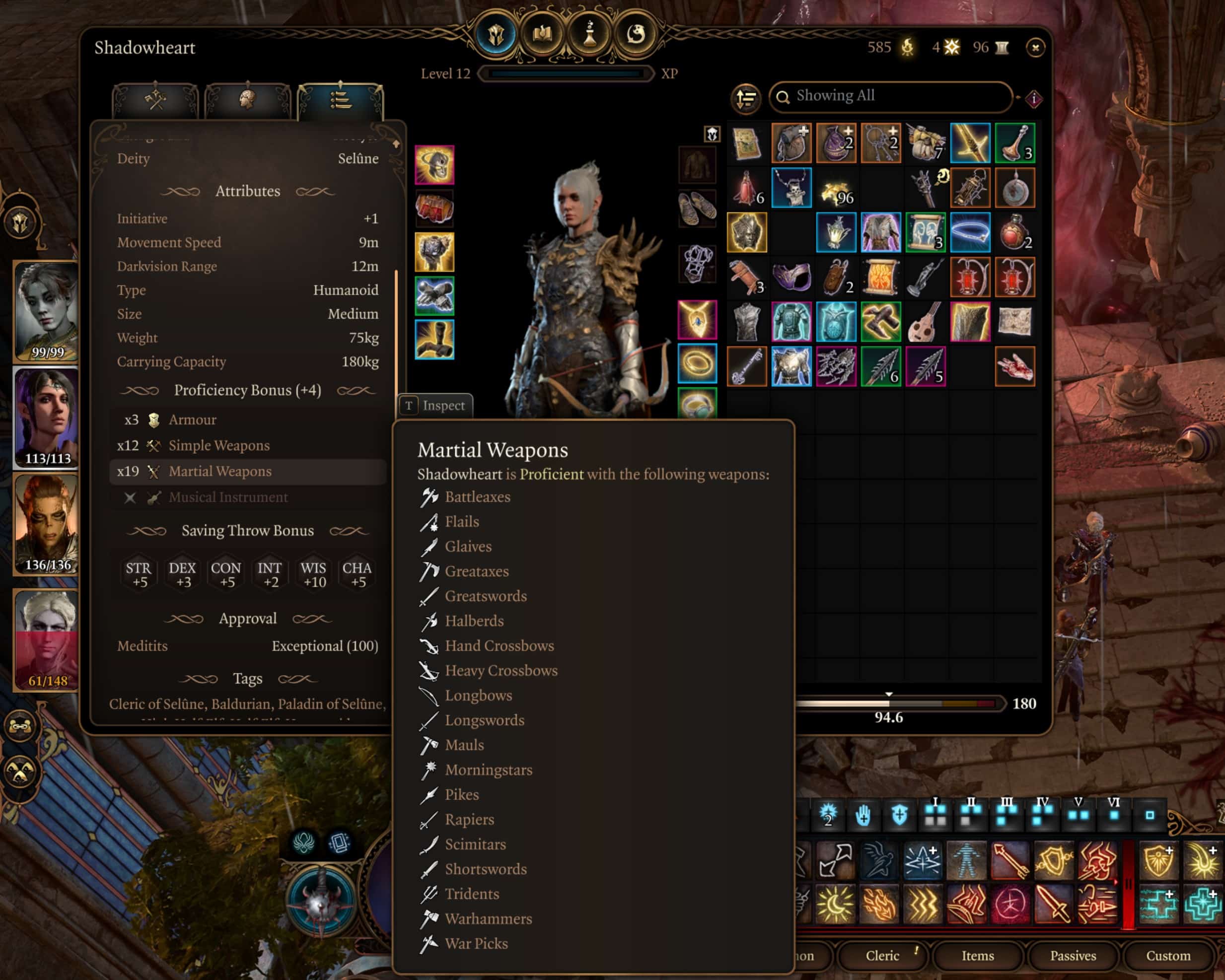Proficiency in Baldur’s Gate 3 refers to how good you are with various skills, weapons, or armor. There are two types of proficiencies in the game. One kind of proficiency explains how good you are at particular skills. The second proficiency is akin to expertise. It explains what kind of weapon and armor your character can handle without any penalties.
The first kind of proficiency is dependent on your race and background. The second proficiency or expertise depends solely on the Class and can further be enhanced by selecting complementing Feats.
In this guide, we will take a detailed look at both kinds of proficiencies and explain what measures you can take to enhance them.
What is Proficiency in Baldur’s Gate 3?
There are two types of proficiencies in Baldur’s Gate 3. The second type is further expanded into two categories because of the stark differences between the Armor and Weapons.
- Skill Proficiency
- Equipment Proficiency
Equipment Proficiency is further divided into.
- Weapon Proficiency
- Armor Proficiency
While skill proficiency adds your main skill as a modifier to your dice rolls (attack, damage, saving throws, spellcasting, and even dialogue checks) Armor and Weapon proficiencies define what kind of weapons and armor you can use. We will be covering all three proficiencies in detail and create a chart to further explain the impact of Race, Background, and Class on them.
Skill Proficiency
The first and undoubtedly the most important one, Skill Proficiency, allows you to add a bonus to all your dice rolls by using your main skill modifier. To further explain it, skill modifiers are determined by class, race, and background. If you are a Barbarian, your main ability modifier will be STRENGTH ability.
Whenever you come across checks that require brute strength like breaking walls, the game will add a +2 STR bonus to your 1d20 dice roll between levels 1-4. This ability modifier increases to +3 between levels 5-8 and +4 between levels 9-12.
You can further enhance the bonus value by investing ability points in Strength and making it reach the maximum value (+5). However, this doesn’t mean your Barbarian can’t intimidate people. You can invest in Charisma skill to get a skill proficiency bonus for Intimidation checks. Or by selecting a race, Half-Orc, or a background, Soldier, that provides you with the same effect.
Equipment Proficiency
The second proficiency or expertise in Baldur’s Gate 3 is directly associated with the gear items. This proficiency is heavily influenced by class and race unlike skill proficiency that uses background as its main source. Equipment Proficiency refers to the kind of equipment, weapons, and armor you can equip without penalties. We will explain it in detail in the respective sections.
Weapon Proficiency
Weapon Proficiency in Baldur’s Gate 3 refers to the ability of a character to wield a particular class of weapons. Being proficient with a weapon allows you to unlock the weapon features and add your proficiency bonus to the Attack Rolls.
Weapons in Baldur’s Gate 3 are divided into two broad categories: martial and simple. A lot of classes can equip and use simple weapons proficiently. While some specific classes are proficient with martial weapons.
| Class | Weapon Proficiency |
| Barbarian, Fighter, Paladin, Ranger | All weapons except improvised ones. |
| Bard, Rogue | Simple Weapons + hand Crossbows, Longswords, Rapiers, Shortswords. |
| Cleric, Warlock | Simple Weapons |
| Druid | Clubs, Daggers, javelins, maces, Quarterstaffs, Scimitars, Sickles, Spears |
| Sorcerer, Wizard | Daggers, Light Crossbows, Quarterstaffs |
| Monk | Simple Weapons + Shortswords |
| Race | Weapon Proficiency |
| Drow | Hand Crossbows, rapiers, Shortswords |
| Dwarf | Battleaxes, Handaxes, Light hammers, Warhammers |
| Elf | Longbows, Longswords, Shortbows, Shortswords |
| Githyanki | Greatswords, Longswords, Shortswords |
| Half-Elf | Glaives, Halberds, Pikes, Spears |
| Human | Glaives, Halberds, Pikes, Spears |
Armor Proficiency
There are three types of armor in Baldur’s Gate 3. Light, Medium, and Heavy. Armor Proficiency refers to the kind of armor a character can wear without suffering negative impacts. Wizards can’t inherently wear any armor, and if they do, the game blocks them from casting any spells.
Armor Proficiency is mostly dictated by Race and Class, and you can check the following tables before deciding.
| Class | Armor Proficiency |
| Barbarian | Light Armor, Medium Armor, Shields |
| Bard | Light Armor |
| Cleric | Light Armor, Medium Armor, Heavy Armor, Shields |
| Druid | Light Armor, Medium Armor, Shields |
| Fighter | Light Armor, Medium Armor, Heavy Armor, Shields |
| Monk | None |
| Paladin | Light Armor, Medium Armor, Heavy Armor, Shields |
| Ranger | Light Armor, Medium Armor, Shields |
| Rogue | Light Armor |
| Sorcerer | None |
| Warlock | Light Armor |
| Wizard | None |
| Race | Armor Proficiency |
| Githyanki | Light Armor, Medium Armor |
| Half-Elf | Light Armor, Shields |
| Human | Light Armor, Shields |
| Shield Dwarf | Light Armor, Medium Armor |
